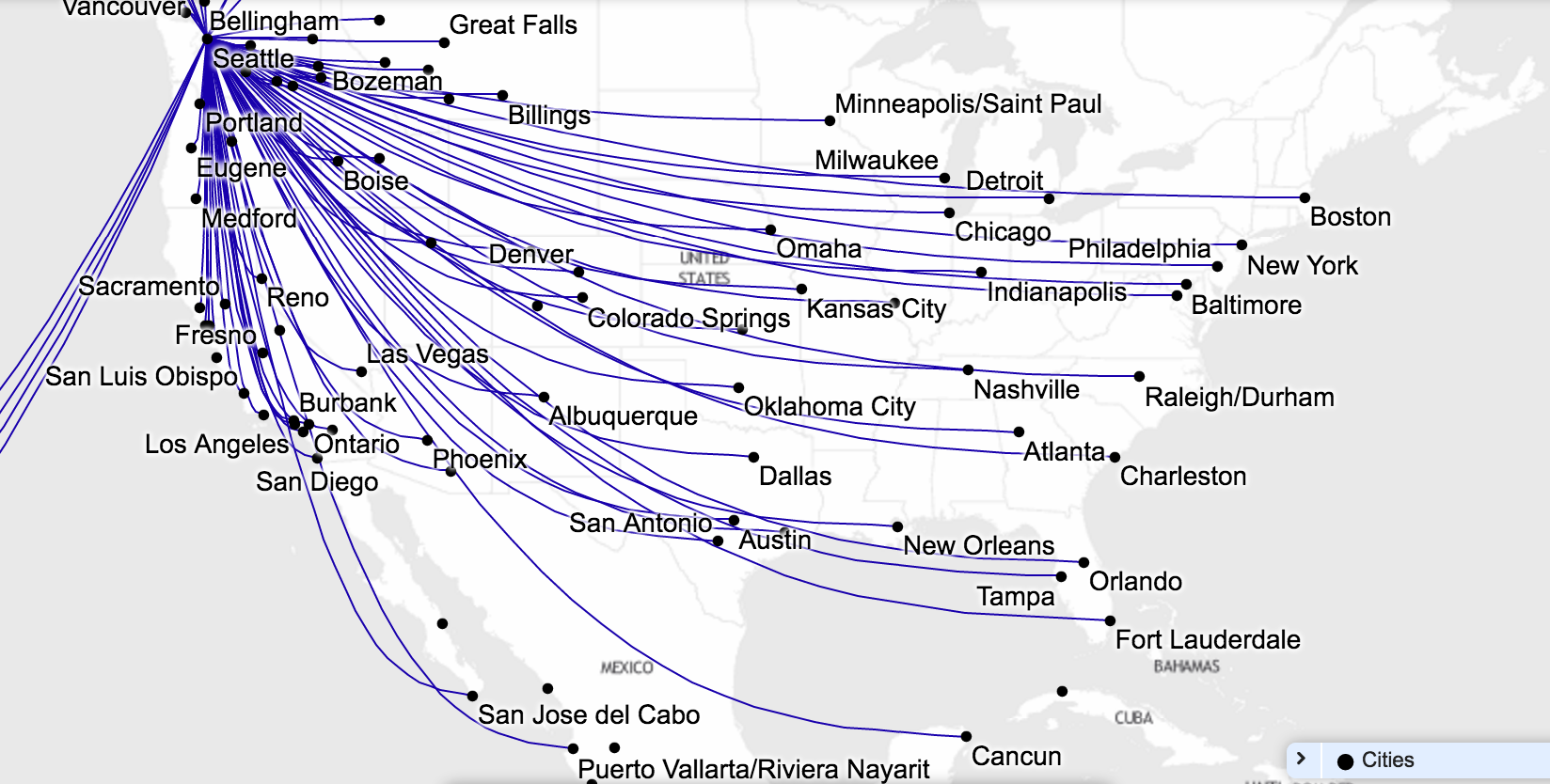Alaska’s new changes to its frequent flier program are truly a breath of fresh air. Typically when you find out an airline is “revamping” its frequent flyer program, this news comes with a host of devaluations, more restrictions on routing, and maybe a redemption or two that gets a little bit better. In short, the news is generally bad. However, on the heels of announcing its merger with Virgin America, Alaska has rolled out a number of very positive changes to its program.
Why is Alaska Airlines a big deal?
A lot of people are fans of Alaska Airlines because it’s historically been easy to accumulate tons of miles with them through both the personal and business Bank of America credit cards (usually offering 25,000 to 30,000 miles). In addition, Alaska Airlines offers some superb redemptions for partners like American Airlines, Cathay Pacific, JAL, and others. The ability to accumulate tons of Alaska miles and use them efficiently on partners is one reason why Alaska Airlines is extremely popular.
But now there’s another reason why Alaska is going to be popular since it’s now offering some cheap ways to get around the US on short-haul flights and new ways to accumulate miles with Virgin America.
Alaska Airlines routes
Alaska Airlines operates with a hub in Seattle (Sea-Tac) and secondary hubs in Los Angeles, Portland, and Anchorage. It operates flights all over the US, and some destinations in Canada, Mexico, and Central America. With its hubs concentrated in the west, it’s a great choice for getting around and to and from the western United States.

Cheaper redemptions
The most welcomed change in this program is the new distance-based redemption rates that greatly reduced the mileage requirements for some routes, especially those for certain short-haul flights. Below is a list of some of the changes that were made (using the same terminology that Alaska is using).
These rates below are for non-refundable one-way flights and there are a few things to keep in mind. One, you may not always be able to find the lowest routes (although I had no issues finding these redemption rates about 2 to 3 months out). Also, while these redemption rates are low, many of these routes can be purchased for cheap already on airlines like Southwest, Virgin America, and Alaska so you always want to consider if using cash is a better option. Finally, stopovers are still allowed on one-way awards, so you can further maximize your value on these routes.
“Hop”: trips less than 700 miles
- Main Cabin: 5,000 to 20,000
- First Class: 25,000
This route was previously 12,5000 miles, so that’s a fantastic reduction. You can now get between destinations like SFO-SEA for only 5,000 Alaskan miles! This makes up for the recent devaluation that hit British Airways’ short-haul flights in North America that many people used to rely on.
“Skip”: trips between 701 and 1,400 miles
- Main Cabin: 7,500 to 20,000
- First Class: 25,000
This route was also previously 12,500 miles.
“Jump”: trips between 1,401 and 2,100 miles
- Main Cabin: 10,000 to 20,000
- First Class: 25,000
This route was also previously 12,5000 miles.
“Leap”: trips longer than 2,101
- Main Cabin: 12,500 to 20,000
- First Class: 25,000
This essentially preserves the previous standard redemption route for getting around North America with Alaska miles.
New transfer ratio with Virgin America
Starting January 9, 2017, you will be able to transfer Virgin America points to Alaska Airlines. The ratio of this transfer is 1 Virgin America mile to 1.3 Alaska Airlines miles. This is not quite as good as some were hoping for since Virgin America’s revenue-based miles are worth more (usually 2 cents per point) and come with better flexibility, but it’s still better than a 1:1 ratio, so I’ll take it.
The big play on this is that Virgin America is a transfer partner of SPG (and so is Alaska). So instead of transferring SPG points directly to Alaska at a 1:1 ratio, it now makes more sense to transfer those SPG points to Virgin America and then to Alaska to maximize your points. For example, if you were to transfer 30,000 SPG points to Virgin America and then to Alaska, you’d end up with 45,500 miles with the 20% SPG bonus factored in versus just 35,000 Alaska miles if you had transferred SPG points straight to Alaska.
Virgin America is also currently a transfer partner of American Express Membership Rewards and Citi ThankYou Points, so there’s also the possibility of transferring from those programs but there are a couple of problems with that. First, Citi is dropping Virgin America in January of 2017 and also the ratio from both of those programs will cut your points by 50% (2:1 ratio) so it’s a no-go for many. However, if you just need to top-off points for a redemption, this may be a solid choice.
And don’t forget that Comenity Bank offers two Virgin America credit cards. The sign-up bonuses are on the lower end at 10,000 and 15,000 but with the 1:1.3 transfer ratio, you could convert 15,000 miles into nearly 20,000 Alaska miles. Also, sometimes targeted offers roll around for these cards with offers up to 30,000 miles. If you were planning on using Alaska miles for a partner redemption, it might not be a bad idea to consider a Comenity Bank Virgin America card to supplement your Alaska miles.
Increased mileage accruals with partners
Another change in effect it that you’ll be able to earn more miles when flying with partners. In some cases, you might be able to earn up to 80% more miles when flying first class or business on different partners, such as British Airways or Cathay Pacific.
Bye, bye to Delta
Alaska announced that they are dropping Delta as a partner starting May 1, 2017. This means that you will no longer be able to earn Alaska miles with Delta and also not be able to book Delta flights with Alaska miles. For folks like myself who never fly Delta, this isn’t a problem but it really was a blow for many who earned Alaskan miles with Delta.
Final word
It’s great to see positive changes happening for a frequent flier program. There’s now additional options for getting around the country with miles for cheaper and more ways to rack up Alaska miles so that you can take advantage of their great partner redemptions. The loss of Delta as a partner hurts some pretty bad, but overall, I think these changes are more on the positive side.
Daniel Gillaspia is the Founder of UponArriving.com and the credit card app, WalletFlo. He is a former attorney turned travel expert covering destinations along with TSA, airline, and hotel policies. Since 2014, his content has been featured in publications such as National Geographic, Smithsonian Magazine, and CNBC. Read my bio.

